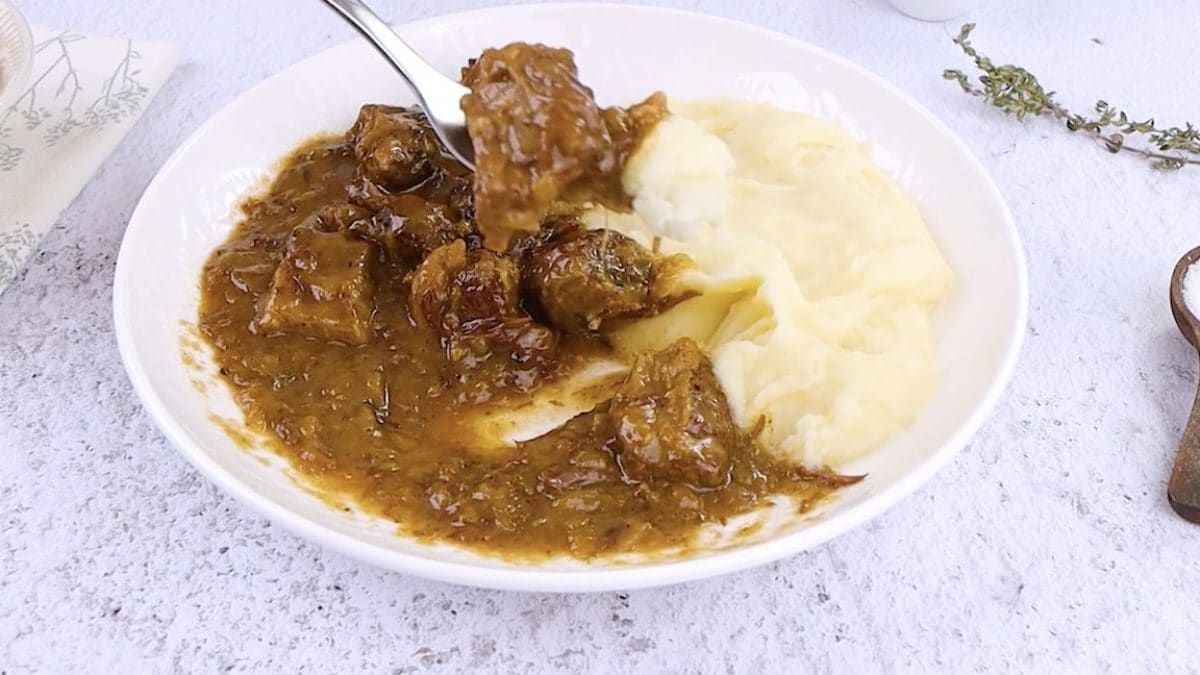
Stew is one of the most beloved recipes in winter: a classic for Sunday lunches or family dinners, it captivates both adults and children with its inviting aroma and soft, creamy texture. It's a stew, meaning it's slowly cooked in a liquid —broth, water, or wine—with seasoning, over low heat and for a long time. The result? Tender morsels of meat and a flavorful sauce that's sure to make a mouthful of bread.
There's no single type of stew: every country, every family, has its own version, with beef, veal, chicken, turkey, or even pork, enriched with different vegetables depending on the season.
But be careful: behind such a simple dish lie some mistakes to avoid. Here are the tips from our team, with the secrets to a truly perfect stew and all the mistakes you can prevent or correct along the way.
1. Choose the Right Meat
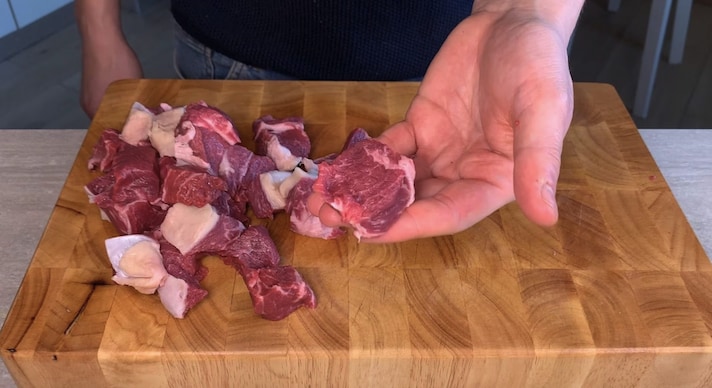
For a tender stew, choose a cut that's not too lean and has a good amount of collagen. Beef is perfect: shoulder, rump, or chuck are ideal for slow cooking. You can also use veal, chicken, or turkey, but make sure it has veins of fat: they'll melt during cooking, making the meat creamy and juicy.
2. Flour the Meat (or Use The Starch Trick)
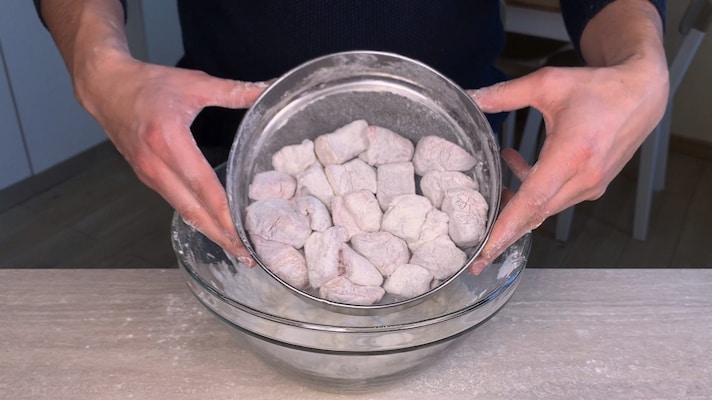
Lightly flouring the meat before browning it helps it form a delicious creamy sauce during cooking. Use a small amount of flour, shake off the excess, and then brown the pieces thoroughly in the pan before deglazing with wine and broth.
Chef's tip: as an alternative to flour, you can use a teaspoon of cornstarch (cornstarch), dissolved in a little cold water, added halfway through cooking. Cornstarch has a more delicate thickening effect and makes the sauce smooth, without weighing down the dish. If the stew is tomato-based, you can add a touch of tomato paste for color and flavor.
3. Cook the Soffritto and The Meat Separately
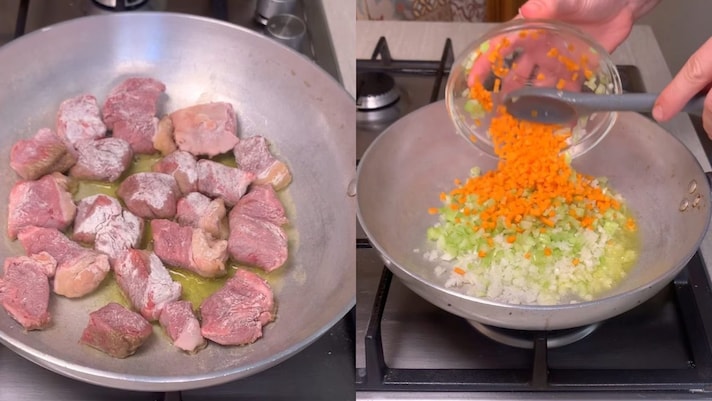
Meat and vegetables should be cooked in two separate pans. Sauté celery, carrot, and onion over low heat in extra virgin olive oil until golden but not burnt. Separately, brown the floured (or starchy) meat with a drizzle of oil and a pinch of salt. Add them only when both are well browned: this way, the vegetables don't brown and the flavor remains balanced.
4. Always Use a Good wine and A Tasty Broth
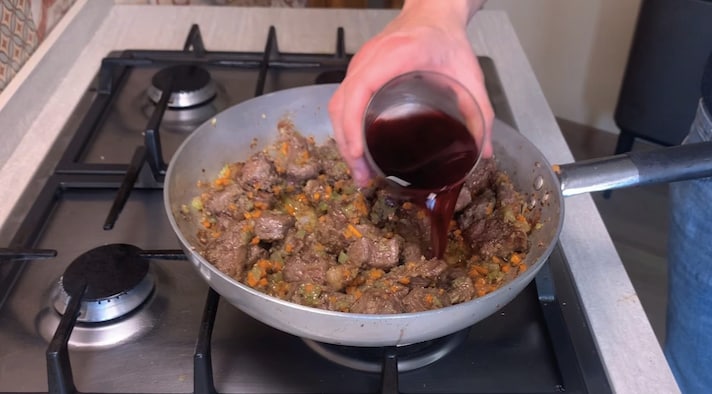
Wine is essential for adding depth to the sauce. After combining the meat and sautéed vegetables, pour in a full-bodied red wine —Chianti Classico, Barolo, or Brunello di Montalcino—and let the alcohol evaporate thoroughly. Then add the tomato puree (if using) and the hot broth, which will make the dish even richer. Don't use a cheap wine, but a quality one, and serve it with it: the pairing will be perfect.
Chef's tip: If you want an even richer-tasting sauce, add a Parmesan crust halfway through cooking.
5. Cook for a Long Time (Without Rushing)
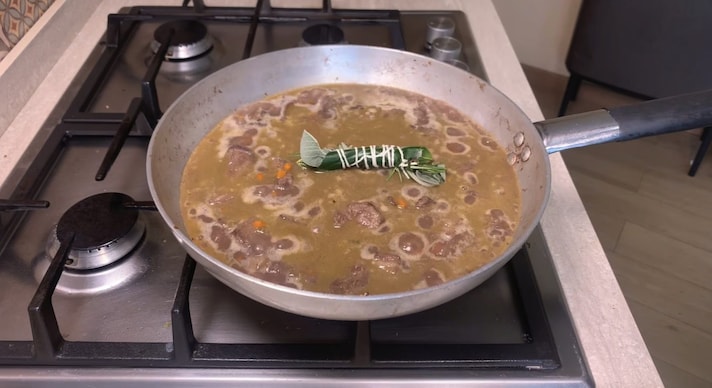
Stew loves slow cooking: cook over low heat for at least two hours, stirring occasionally and adding broth if needed. White meats require less time, about 40 minutes, but no less, to avoid them becoming stringy. Slow cooking is the key to obtaining meat that melts in your mouth and a thick, fragrant sauce.
6. When Should You Add Potatoes?
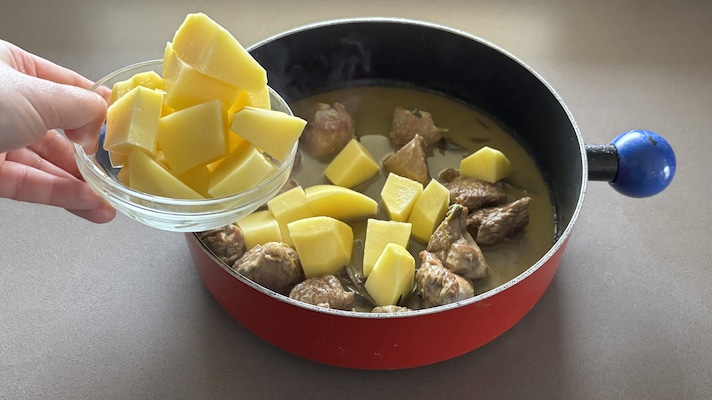
If you want to add them, add the diced potatoes about 30 minutes before the end of cooking: this way they soften without falling apart. Alternatively, you can replace them or combine them with peas, sliced carrots, or mushrooms, for ever-changing variations. In summer, you can also try it with onions and peppers.
7. Don't Forget to Let It Rest
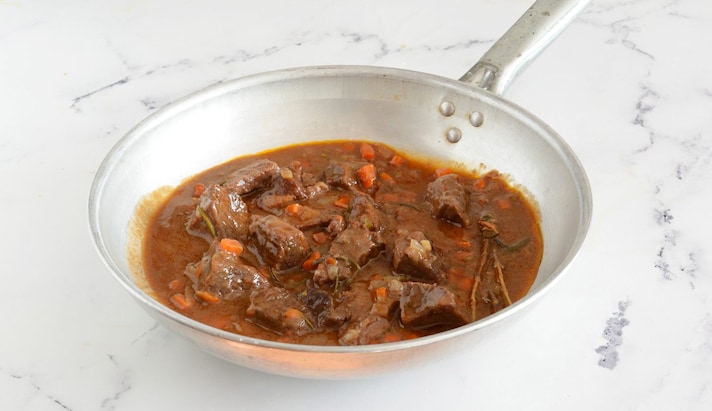
Like many stews, stew tastes best the next day, when the flavors have meld together. Serving it freshly cooked isn't a serious mistake, but it misses an opportunity to make it extraordinary. If you can, prepare it a few hours in advance (or even the night before), then gently reheat it before serving: it will be even more flavorful and creamy.
The Most Common Mistakes And How to Fix (or Prevent) Them
Despite our advice, you may still make some mistakes that shouldn't be overlooked. Here are the main mistakes you can make when making stew, and how to fix or prevent them:
You Cut The Meat Too Small (or Too Big)
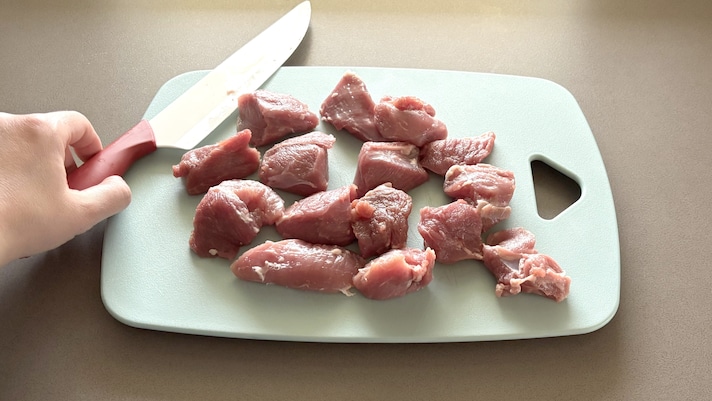
The size of the pieces is more important than it seems. If you cut them too small, they dry out and become stringy; if they're too large, they undercook and risk staying tough. Cut the meat into pieces about 3-4 cm on each side, all the same size, so they cook evenly and achieve perfect results.
You Browned the Meat Badly
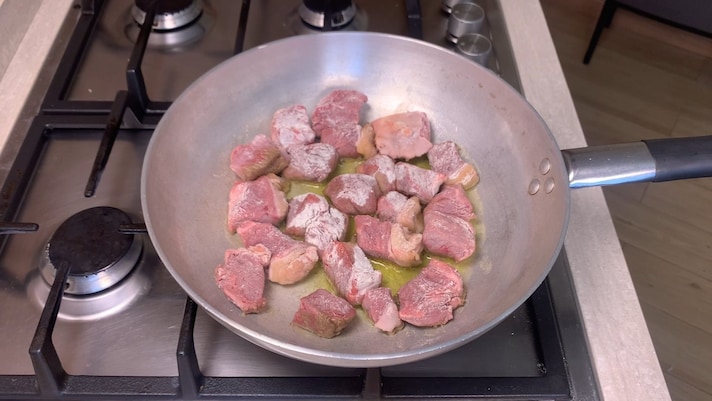
Rushing browning is one of the most common mistakes: if the pan isn't hot enough or if you add too much meat at once, the temperature drops and the meat releases water instead of sealing, becoming pale and tough.
The solution: brown a few pieces at a time in a very hot pan without a lid, so as to create that golden crust that seals in the juices.
You Added too Much Salt
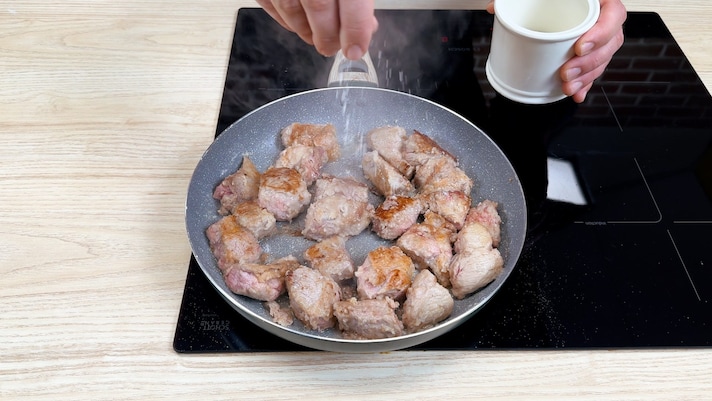
We all overdo it with salt, but there's a way to fix that. Add a couple of peeled potatoes, cut into large wedges, and a glass of water: cook for about half an hour. The potatoes will absorb some of the excess salt, and the flavor will return to its original balance.
The Sauce is Too Liquid
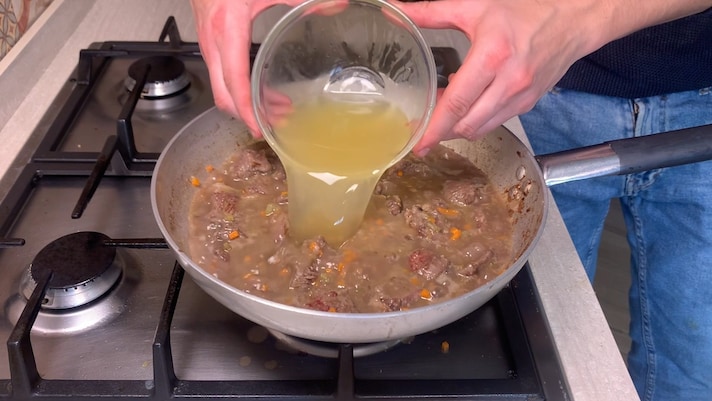
Sometimes, fearing sticking, we tend to add too much broth or water. However, this will always result in the sauce remaining too thin, and the meat will boil rather than simmer. The liquid should barely cover the meat: add it gradually and hot, never all at once, and never cold. If you've added too much, no problem: dissolve a tablespoon of cornstarch or all-purpose flour in a little cold water and add it to the stew, stirring well. In a few minutes, the sauce will become thick and creamy, just as it should be.
You Used The Wrong Pan
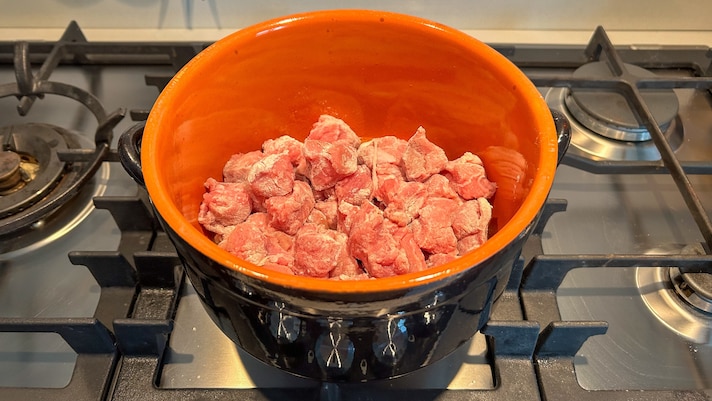
Choosing the right pan is crucial: a pan that's too thin will evaporate the liquid too quickly and risk the meat sticking. If possible, use a thick-bottomed pan or pot with a lid, preferably made of cast iron, steel, or terracotta, for even heat distribution and slow, consistent cooking.
You Don't Have Time for Long Cooking
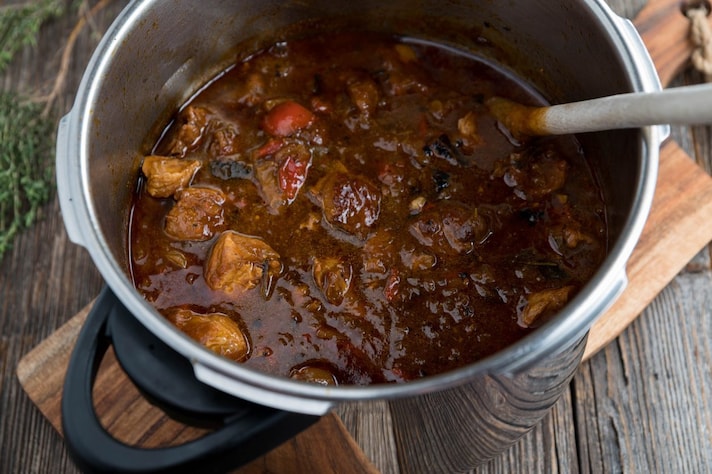
Stew requires patience, but if you're in a hurry, you can use a pressure cooker. It will reduce cooking time by about two-thirds: for a recipe that normally takes two hours, 40 minutes from the whistle will be enough. The result will still be tender and tasty.
;Resize,width=767;)
